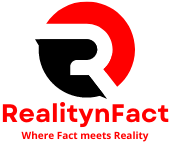Frontal headaches, characterized by discomfort in the forehead area, are a common ailment that affects many individuals. Understanding the nuances of frontal pains, including their causes, symptoms, treatment options, and preventive measures, is crucial for effectively managing and alleviating their impact on daily life.
Understanding Frontal Headaches
Frontal pains typically manifest as pain, pressure, or a dull ache localized in the forehead. The frontal region of the head houses the frontal sinuses, which can contribute to pain symptoms when inflamed or congested. These pains can vary in intensity and duration, often affecting concentration, productivity, and overall well-being.
Types of Frontal pains
- Tension : Often associated with stress, muscle tension, and poor posture, tension can cause mild to moderate pain that may radiate to the forehead.
- Sinus : Resulting from sinusitis or allergies, sinus pain involve inflammation of the sinus cavities, leading to facial pressure, congestion, and frontal pain. For more information on sinus pains, visit Mayo Clinic.
- Migraines: Severe pains characterized by throbbing pain, sensitivity to light and sound, nausea, and sometimes affecting the frontal region. Learn more about migraine triggers from American Migraine Foundation.
- Cluster Headaches: Intense pains occurring in clusters or cycles, often causing severe pain around the eye and forehead.
- Cervicogenic : Originating from neck disorders, cervicogenic headaches can radiate pain to the frontal area.
Causes
Several factors contribute to the development of frontal headaches:
- Muscle Tension: Stress, poor posture, and prolonged muscle tension in the neck and shoulders can lead to tensionthat affect the forehead.
- Sinus Issues: Inflammation or infections of the sinuses, such as sinusitis or allergies, can trigger frontal sinus.
- Migraine Triggers: Migraines can be triggered by various factors including hormonal changes, certain foods, stress, or environmental factors.
- Eyestrain: Prolonged use of digital screens, reading without breaks, or inadequate lighting can strain the eyes and cause frontal headaches.
- Weather Changes: Barometric pressure changes and weather fluctuations can trigger headaches in susceptible individuals.
Symptoms
The symptoms of frontal headaches can vary depending on the underlying cause but commonly include:
- Dull, aching pain in the forehead
- Pressure or tightness in the forehead or around the eyes
- Tenderness on the scalp or forehead
- Sensitivity to light or sound
- Nausea or vomiting (in migraines)
- Visual disturbances (in migraines)
Treatment Options for Frontal Headaches
Treatment depends on their cause and severity:
- Over-the-Counter Medications: Pain relievers such as ibuprofen or acetaminophen can help alleviate mild to moderate.
- Prescription Medications: For severe or recurring, prescription medications like triptans (for migraines) or corticosteroids (for sinus headaches) may be prescribed.
- Sinus Treatments: Decongestants, nasal sprays, or antihistamines may be recommended for sinus headaches caused by allergies or sinusitis.
- Lifestyle Modifications: Practicing good posture, managing stress effectively, staying hydrated, and getting sufficient sleep can help prevent and manage frontal headaches.
- Alternative Therapies: Techniques such as acupuncture, chiropractic adjustments, biofeedback, or relaxation techniques may provide relief for some individuals.
Preventive Measures
Preventing involves identifying triggers and making lifestyle adjustments:
- Maintain Good Posture: Avoid slouching and maintain proper ergonomics while sitting and standing.
- Manage Stress: Practice relaxation techniques, meditation, or yoga to reduce stress levels.
- Stay Hydrated: Drink plenty of water throughout the day to prevent dehydration, which can trigger headaches.
- Limit Screen Time: Take breaks from digital screens and ensure proper lighting when reading or working on a computer.
- Monitor Diet: Identify and avoid trigger foods, maintain a balanced diet rich in fruits, vegetables, and whole grains.
- Manage Allergies: Address allergies promptly with medications or allergy shots to minimize sinus-related headaches.
When to Seek Medical Attention
While most frontal headaches are not serious, consult a healthcare provider if:
- these are severe, persistent, or worsen over time.
- these are accompanied by fever, vomiting, confusion, or neurological symptoms.
- There is a sudden onset of severe pain in head, especially if it’s the worst of your life.
- You have a history of head injury, neurological disorders, or other medical conditions.
Conclusion
Frontal headaches can significantly impact daily life and productivity, but understanding their causes and implementing effective management strategies can help minimize their occurrence and severity. By identifying triggers, adopting healthy habits, and seeking appropriate medical care when needed, individuals can effectively manage frontal headaches and improve their quality of life. Consultation with a healthcare provider ensures proper diagnosis and personalized treatment, enhancing the ability to manage and alleviate frontal headaches effectively
For more information on fitness and health, check out these resources:
Explore more articles on our site:
- How to Increase Running Stamina for Beginners at Home
- What Happens if You Don’t Get Enough Sleep Consistently: Effects and Solutions
- The Ultimate Guide to Healthy Living in 2024
- The Future of Artificial Intelligence: What to Expect
- Unlocking the Potential of Chat GPT Software: Revolutionizing AI Conversations
- Best Sleeping Position for Peripheral Artery Disease [New 2024]
- How to Increase Running Stamina for Beginners at Home
- 5 New Inner Thigh Exercises for Men and Women




